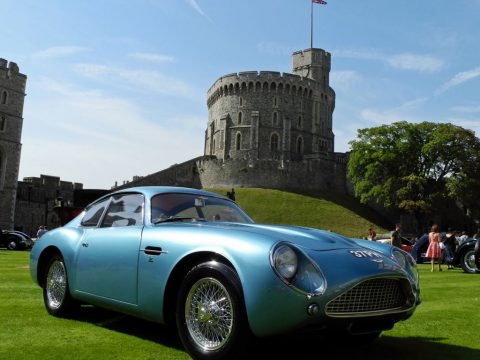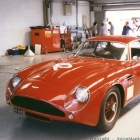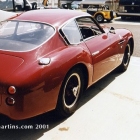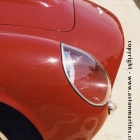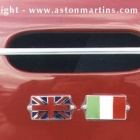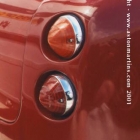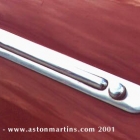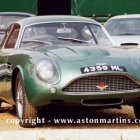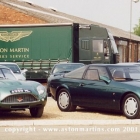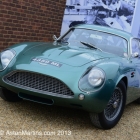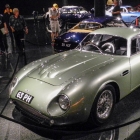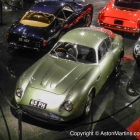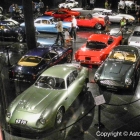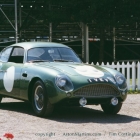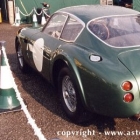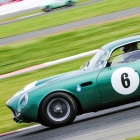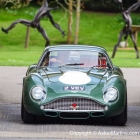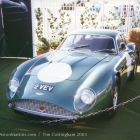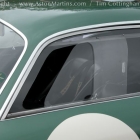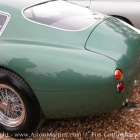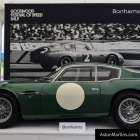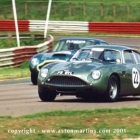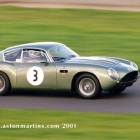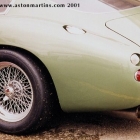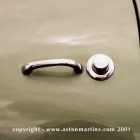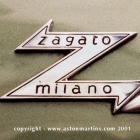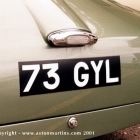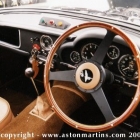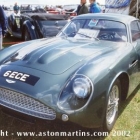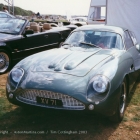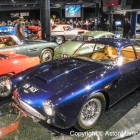The Zagato was given an even more powerful engine than the standard GT by using an even higher 9.7:1 compression ratio. This was able to produce a quoted 314 bhp. Needless to say that the performance was and still is very impressive with a top speed of 153 mph and 0 to 60 acceleration in 6.1 seconds.
Although DB4GT/0200R has the highest chassis number, it was actually the first example built and was unveiled at the Earls Court Motor Show in 1960. The car features a unique curved bright strip which wraps itself around the wing vent and then extends across the door. The car was raced at the Le Mans 24 hour race in 1962 in the hands of Salmon and Baillie where it unfortunately retired after 9 and a half hours with a blown piston.
DB4GT/0176/R is probably the most original of all the 19 surviving cars and despite being nearly 60 years old, it has a very low mileage and is in remarkably original condition. Like many of the Zagato’s it was originally painted in red, the national racing colour of Italy. Thankfully, 0176 is unusual in retaining it’s original colour unlike many of it’s contemporaries which are now Aston Racing Green (or similar California Sage). I particularly like the spokes on the Borrani wheels being painted to match the body colour.
This Italian Red Zagato is a frequent sight at UK historic events and AMOC meetings and has been featured in many books.
This car, chassis number DB4GT/0184/R, was the only Zagato to be the subject of a full road test by Autocar magazine. Thereafter 0184 was sold to Dunlop for experimental work testing tyres and brakes and of course was fitted with Dunlop disc brakes. During this time the car was used heavily before being sold into private hands in 1967. These photographs were taken at the factory at the 2000 AML/Brookes auction. In the lower picture, 0184 is in the company of the very last V8 Vantage Zagato 20062.
This is DB4GT/0191/R and is one of the three cars built to the much lightened DP209 specification specifically for racing. After extensive racing during 1963/4 the car was badly damaged in an accident at Castle Coombe in 1966. Thankfully it’s rarity secured it’s future and the car was rebuilt.
These are probably the most famous Zagatos ever. 1VEV and 2VEV were both ordered especially lightened for racing by John Ogier’s Essex Racing Stable. Although this was not a works team as such, it enjoyed strong factory support. Both cars competed at Le Mans and have been raced by such famous names as Roy Salvadori and Jim Clark. 2 VEV was seriously damaged in 1962 during a crash at Spa and was replaced by a new car built to DP209 specification, with the same registration number and incorporating many modifications. Another accident in 1993 except this time on the road returned the car to Works Service at the factory which returned it to 1962 specification (see below). The three DP209 cars are easily distinguished with their lower roofline, broader rear wings, a reshaped tail and flatter, longer nose. I hope that these differences are apparent in the pictures of 2 VEV and 63PH
Now of course, all of the Zagatos are unique, but this car (DB4GT/0190/L) is more unique than most. The first owner requested many special features including thicker gauge alloy panels (to reduce risk of dents) Chromed brightwork, and glass in place of Perspex windows. Most interesting is the unique grille and the late DB4 style rear lights. It may be the heaviest Zagato but in my opinion is the prettiest with the wonderful silver paint finish.
This is DB4GT/0186/R which was exported to Australia by it’s first enthusiastic owner. It stayed in the Southern Hemisphere until the early 1990’s when it was repatriated to the UK and restored by Goldsmith and Young, Aston Martin Restorers. 73 GYL as it was until recently registered, was the most commonly seen Zagato on the UK historic racing scene. Many of the modifications for racing have been made easily reversible and include a roll cage.
Two Zagatos chassis number DB4GT/0177/R (right) and DB4GT/0179/L (left), both remarkably standard (if there is such a thing for a Zagato)
The Zagato is probably the most desirable Aston Martin but this wasn’t always the case. The factory had plans to produce 25 cars and production started with the highest chassis number (DB4GT/0200/R), further cars had lower chassis numbers. But demand wasn’t that strong and only 20 cars were completed; of those, two shared the same chassis number. The last two cars were sold off cheaply by the factory to the Aston Martin dealer, HWM, who in eventually managed to sell the unwanted cars. Now the Zagato is rated as the most beautiful of all Astons with a value potentially around the £5,000,000 mark and maybe much more. The remaining unused chassis numbers were eventually ‘recycled’ in 1991 with the emergence of the Sanction 2 cars.
In writing this page, I often referred to the book, Aston Martin DB4GT Zagato, published by Palawan Press Ltd, very expensive but worth every single penny.



